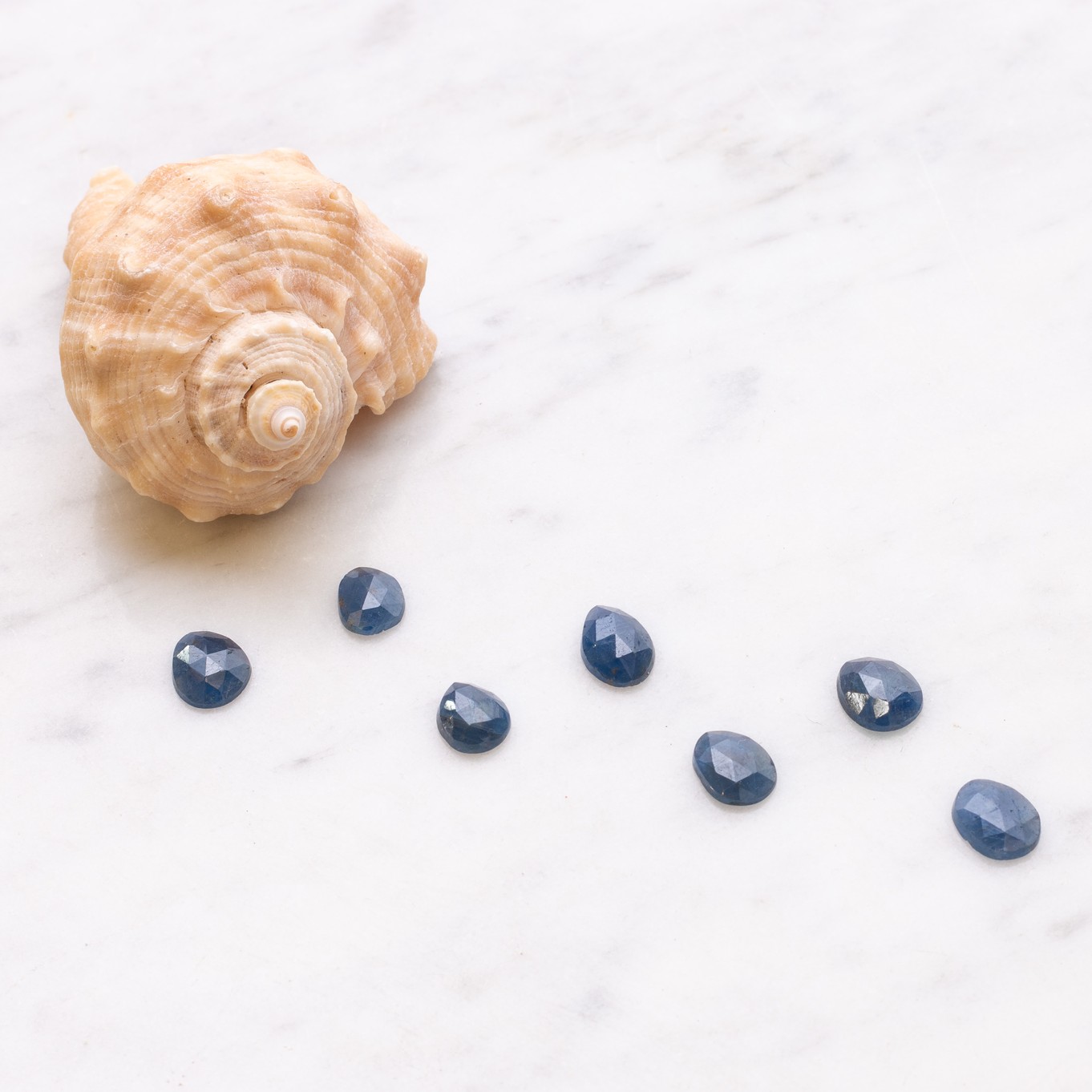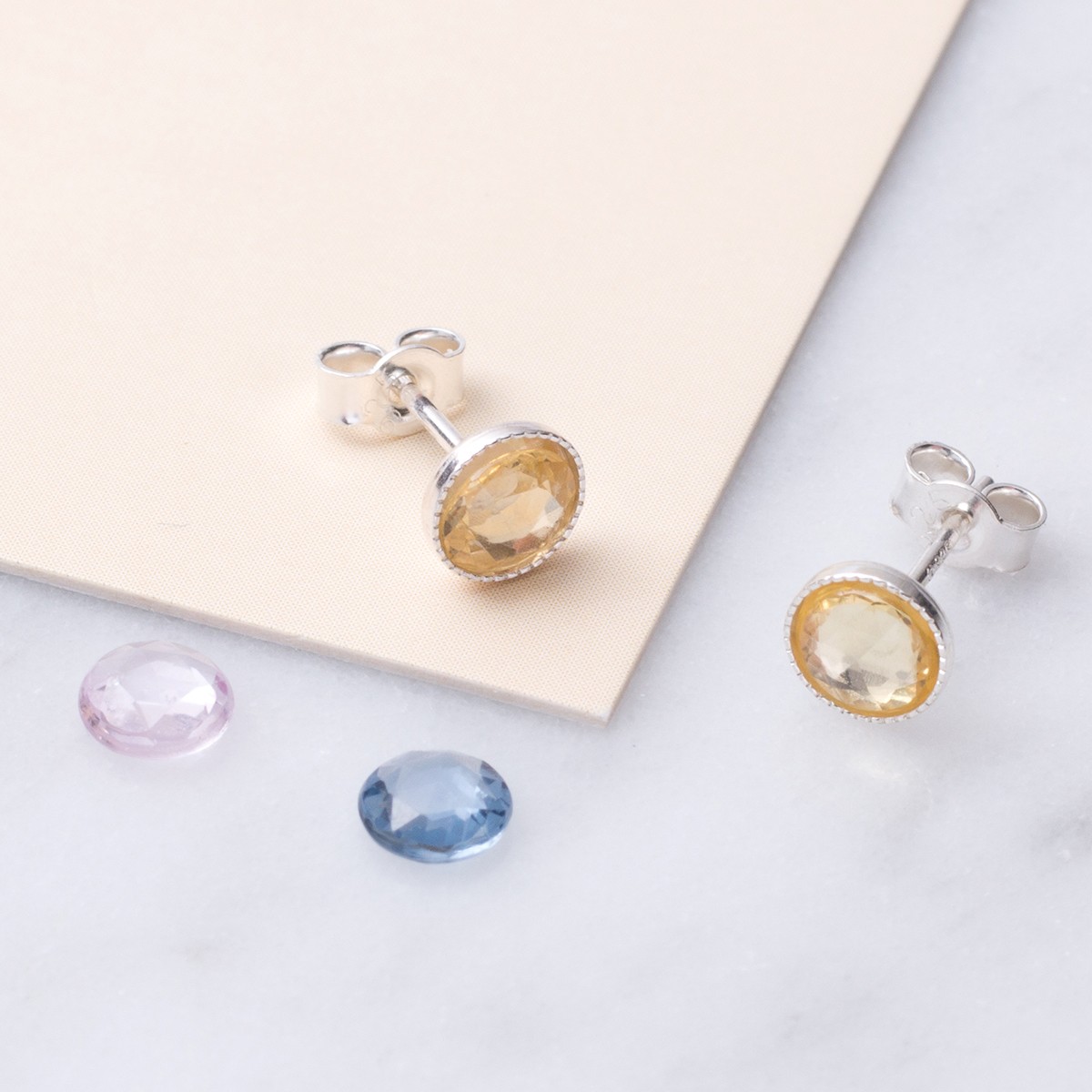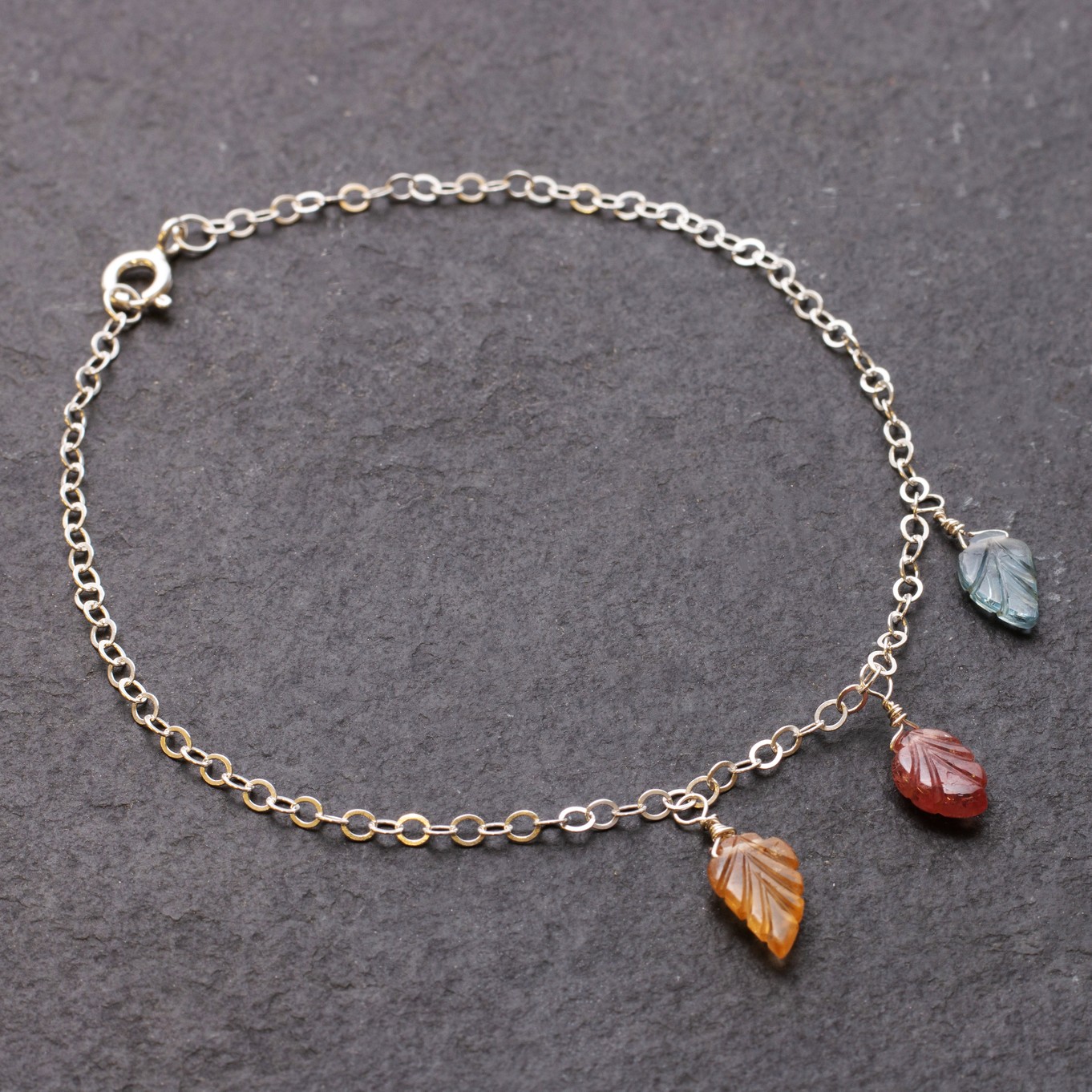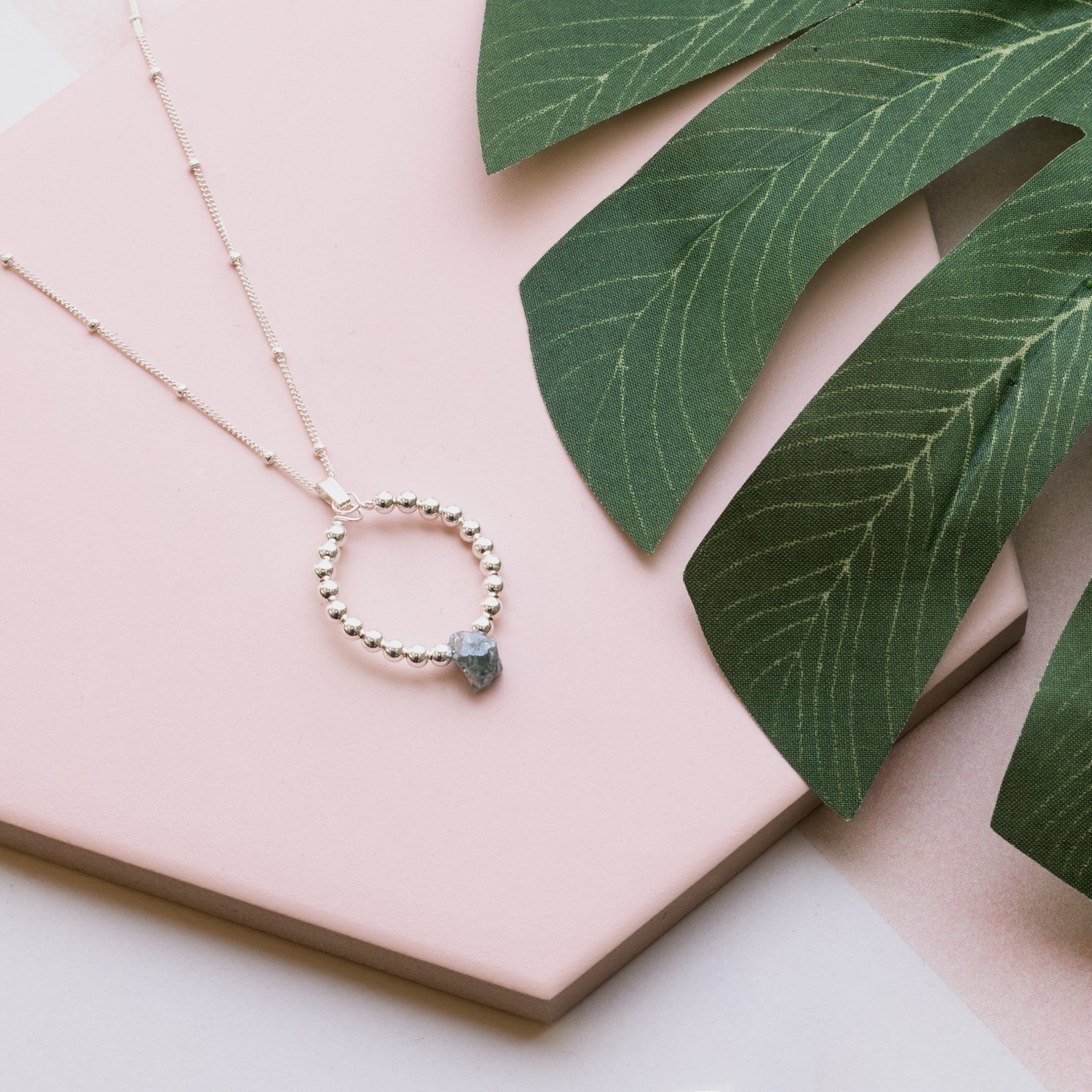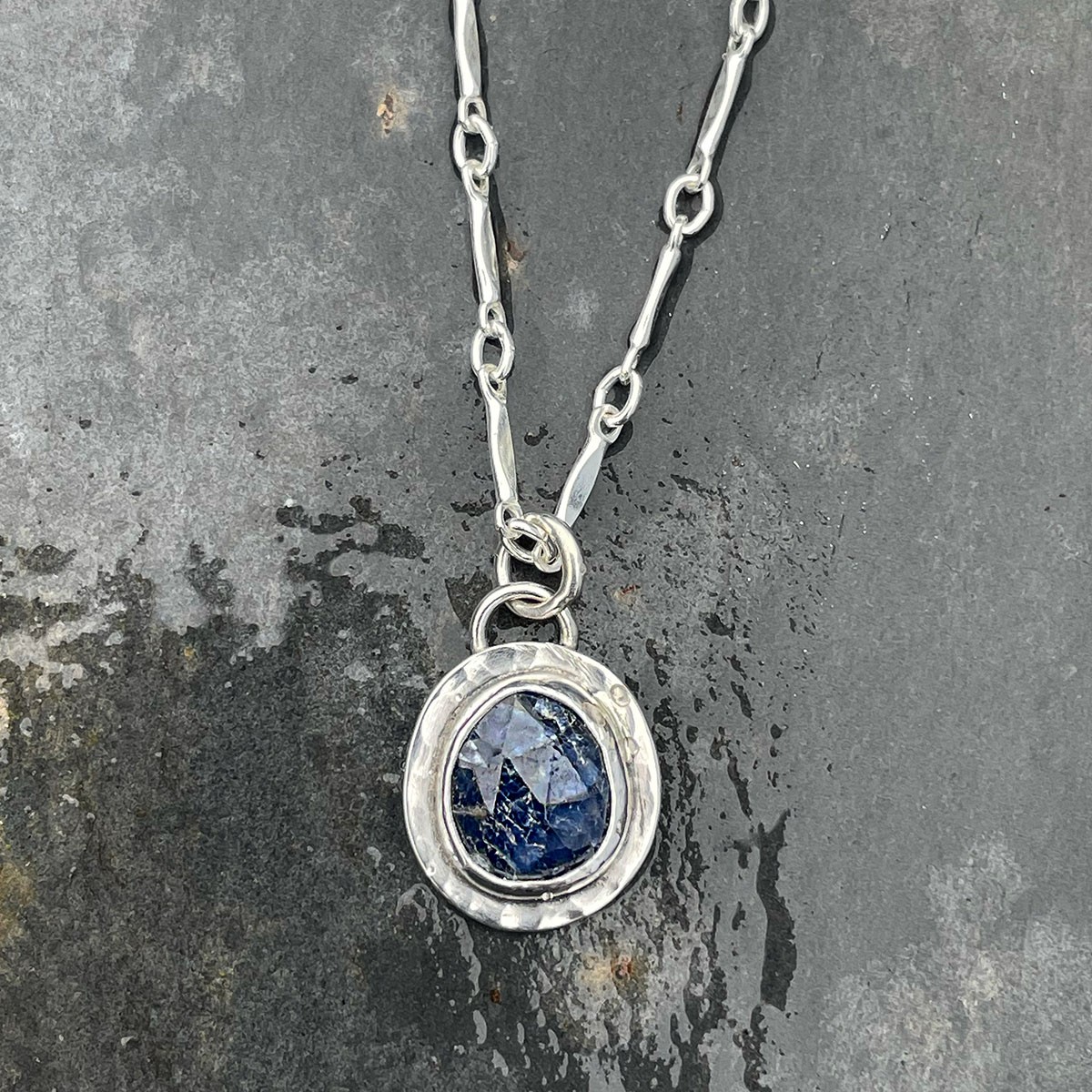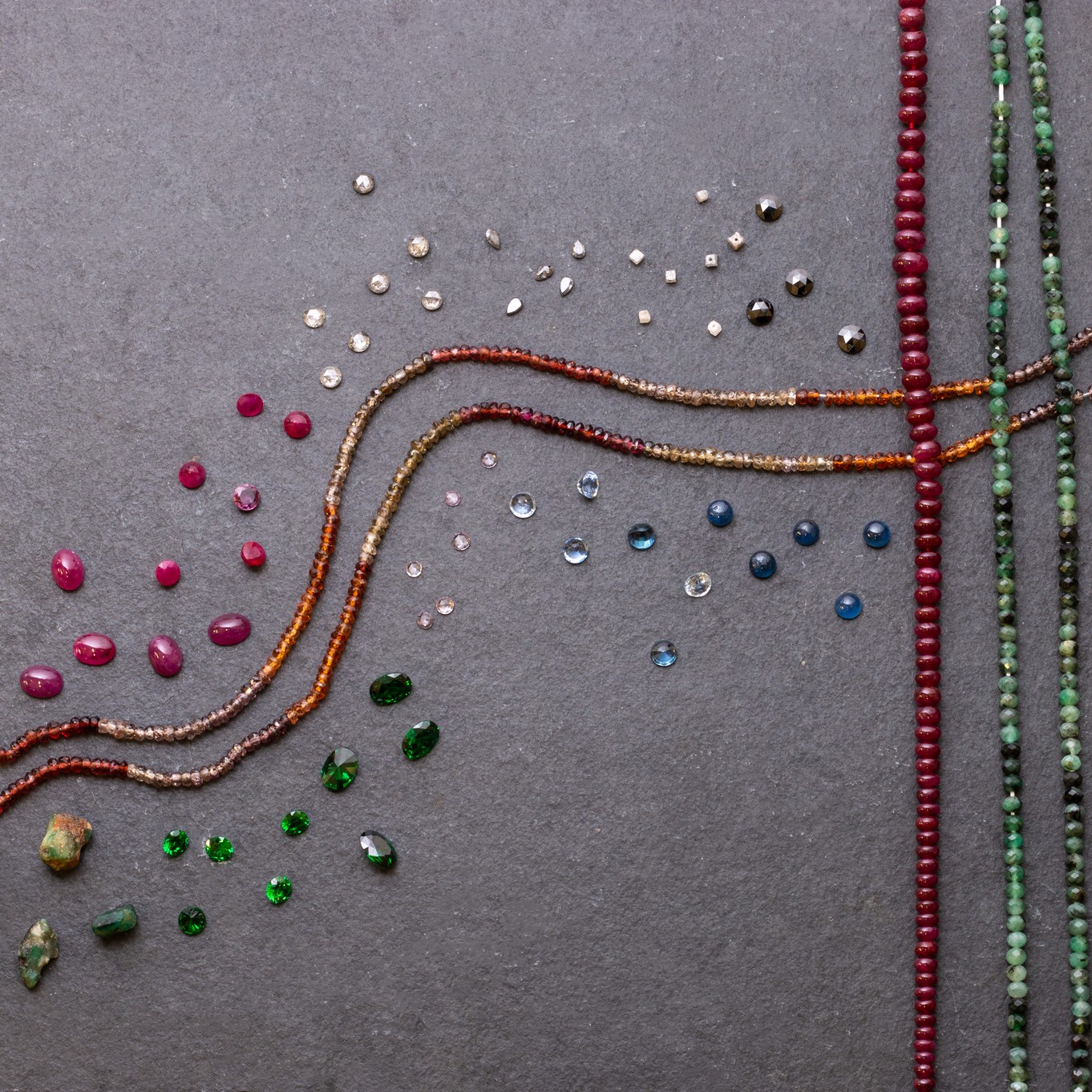Sapphire: The September Birthstone
As a precious gemstone, sapphire has some amazing properties and a rich history. It is also the birthstone of September - a month of change where summer meets autumn and the wooly jumpers come out!
In this blog post, we delve into everything sapphire. This includes formation, physical properties and meta-physical properties as well as, of course, some jewellery making inspiration.
Sapphire Facts
Colour: Blue in various hues, colourless, pink, orange, yellow, green, purple and black.
Appearance: Transparent or opaque.
Rarity: Some colours of the stone are rare - others are easily obtained as uncut stones.
Moh's Hardness Scale: 9
Sourced: Czech Republic, Thailand, Brazil, Kenya, India, Australia, Sri Lanka.
Formation & History: The name sapphire is Greek for blue. Before the properties of the stone were discovered in the middle ages, the name sapphire was applied to various blue stones such as what is now called lapis lazuli.
Around the 1800s it was recognised that sapphire and ruby are gem varieties of the same mineral - Corundum. Corundum is a rock forming mineral which is the hardest after diamond.
Pure corundum is colourless, however the colours that are found in both ruby and sapphire are caused by small amounts of chemical impurities. The rich red of ruby is caused by chromium, whilst sapphire is the name given to all other colours of corundum which is caused by iron and titanium. These colours include blues, yellows, pinks, greens and more. Sapphire is more commonly associated with the colour blue.
Before the various variety of colours was given the name sapphire, they were given misleading names, such as "oriental topaz" and "oriental peridot".
The main sapphire bearing rocks are marble, basalt or pegmatite. The most desired sapphires used to come from Kashmir, India, where the deposits were situated at a height of 16,500 ft in the Zaskar region. It is said the sapphires were of deep cornflower blue with a silky sheen.
Metaphysical Properties: Sapphire is known as the wisdom stone, each colour has its own particular wisdom. It is said to focus the mind, releasing unwanted thoughts and creating a calm effect. Sapphire is said to bring peace of mind and serenity by aligning physical, mental and spiritual planes to restore balance within the body.
By Colour:
Blue Sapphire: A seeker of truth and traditionally associated with love and purity. Said to facilitate self-expression and speaking the truth.
Black Sapphire: Protective and increases confidence in one's own intuition. This stone is said to help retain a job.
Green Sapphire: Said to aid dream recall and stimulate loyalty and integrity.
Yellow Sapphire: Attracts wealth and helps to increase prosperity and earnings.
Healing: Sapphire is thought to calm an overactive body system and regulate the gland. It is also thought to help heal the eyes and improve vision. Sapphire is also said to treat blood disorders and alleviate excessive bleeding, strengthening veins and their elasticity.
Jewellery Designs With Sapphire
As a precious stone sapphire makes any piece of jewellery high value. With a range of sapphire stones in stock including both faceted and cabochons as well as substitutes for sapphire at a lower price tag (but without the hardness), we are always on the lookout for inspirational jewellery designs using this amazing stone.
Yellow Sapphire Earstuds
These pretty earstuds feature sapphire rose cut cabochons, glued into our milled edge earstud settings for cabochons.
Sapphire Leaf Bracelet
This bracelet design features three precious wire wrapped sapphire leaf beads, they are so delicate and pretty and we just love the range of unique colours they come in. This design could be easily recreated with a necklet chain too or you could even make yourself some matching earrings to create a set.
Discover more with Kernowcraft
Resources:
- The Crystal Bible - Judy Hall
- Gemstones of The World - Walter Schumann
- Gemstones - Cally Oldershaw, Christine Woodward & Roger Harding
Also in this section:
- The Chakras & Stones For Beginners
- Top Gemstones For Love & Valentine's Day
- Rare Ammolite For Jewellery Making
- 5 Gemstones To Honour Your Mum
- 5 Gemstones To Wear On Your Travels
- Mohs Hardness Scale, Gemstone Durability & Jewellery Making
- Top 10 Affordable Gemstones For Jewellery Making
- Your Guide To Anniversary Gemstones & Jewellery Making
- Your Guide To Birthstones & Birthstone Jewellery
- Discover Rare Cornish Turquoise
- Garnet: The January Birthstone
- Amethyst: The February Birthstone
- Aquamarine: The March Birthstone
- Diamond: The April Birthstone
- Emerald: The May Birthstone
- Pearl: The June Birthstone
- Ruby: The July Birthstone
- Peridot: The August Birthstone
- Sapphire: The September Birthstone
- Opal: The October Birthstone
- Topaz: The November Birthstone
- Turquoise: The December Birthstone
- Types Of Diamonds For Jewellery Making
- Lapis Lazuli, The Stone For Truth & Communication
- Types Of Agate Stones For Jewellery Making
- What Are Precious & Semi-Precious Stones?
- Watermelon Tourmaline For Jewellery Making
- 6 Stones For Alternative Engagement Rings
- Rare Tanzanite For Jewellery Making
- Gemstones For Your Inner Mermaid
- 5 Spiritual Gemstones To Help Your Mind & Body
- Rose Quartz, The Love Stone
- What Are Drusy Gemstones?
- What Is A Boulder Opal & How Do We Source Them
- All About Our Natural Untreated Turquoise

